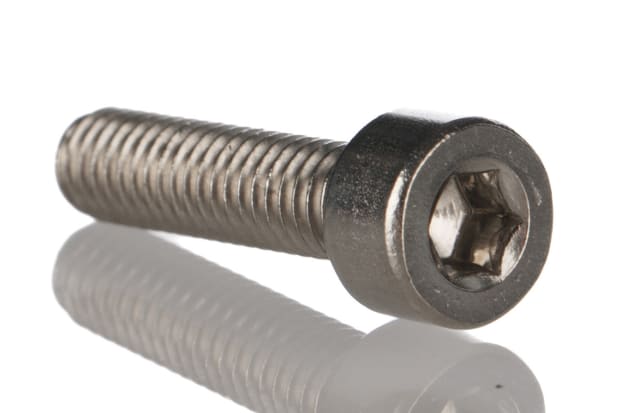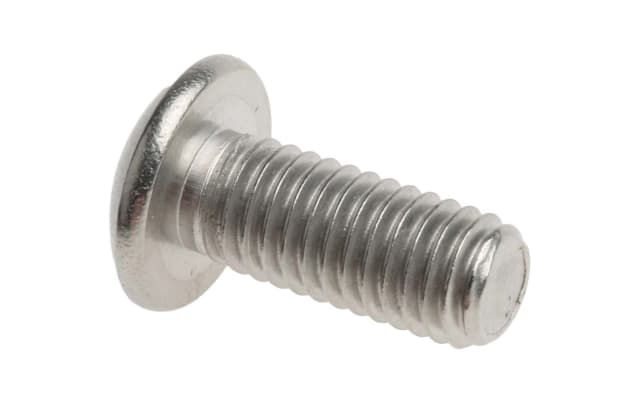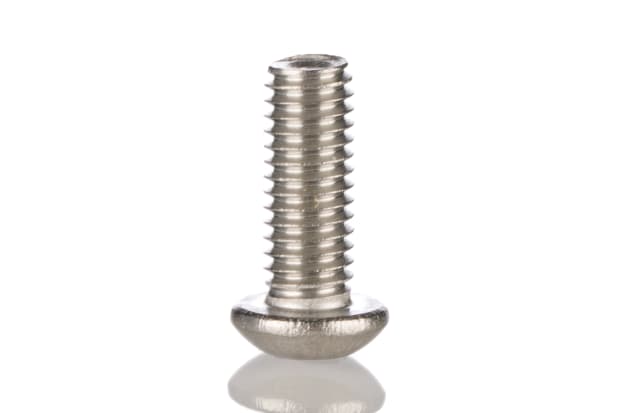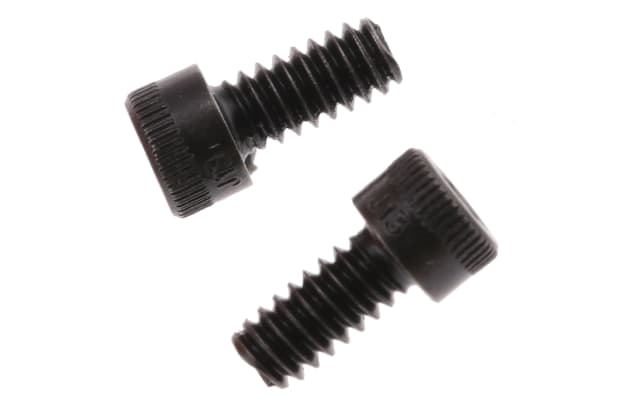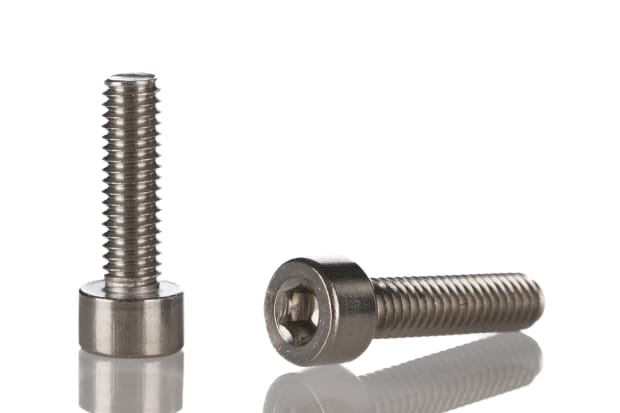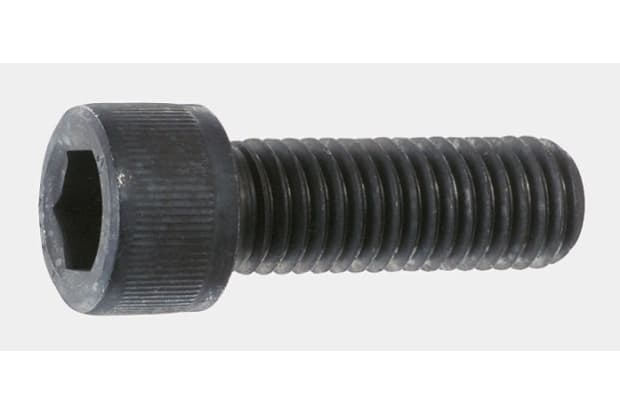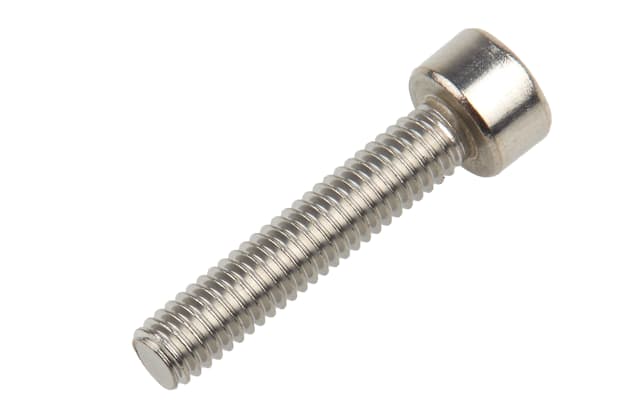- Published 11 Jan 2023
- Last Modified 9 Aug 2023
- 9 min
Everything You Need to Know About Socket Screws
Discover which type of socket screw is best suited to your particular requirements in our comprehensive guide.

In this guide, we will cover some of the various different socket screw types, materials and designs, and discuss which sorts of socket set screws are best to use across a range of specific applications and mounting requirements.
What is a Socket Screw?
Socket screws are a type of screw designed and manufactured with a hexagonal (hex) internal drive built into the head. As such, they are intended to be tightened and loosened with an Allen wrench or hex key, as opposed to a traditional screwdriver. This is the key feature that sets a socket screw apart from other screw head drive styles such as the Phillips head screw, slotted and flathead screws, and Pozidriv screws, to name just a few.
Another common distinction is that socket screws are often squared off at the tip. These are generally referred to as flat point socket screws and they tend to be the most widely used type found in many common applications. However, it's worth noting that various other designs are also available.
In most other regards, there isn’t typically much physical difference between socket screws and regular screws for the majority of everyday uses. So what exactly is the point of a socket screw, and when should you use one?
In short, socket screws combine some of the increased performance features of other common hex fasteners - nut and bolt systems being the obvious point of reference - with the convenience and ease of use of a standard format screw set. This middle ground can be a useful compromise in many situations, particularly when working in confined spaces or areas without easy access to secure externally wrenched hex fasteners.
Advantages of Socket Screws
The potentially higher torque and clamping force that can be achieved with a socket screw over a regular screw makes them a preferable option in some applications. When compared to regular screws and bolts in a like for like test, socket screws can often deliver some or all of the following advantages in relevant scenarios:
Since socket screws typically offer greater clamping force than standard screws and many other small-format fastener types, fewer socket screws can be used in a given application to achieve the same overall clamping force on the joint or workpiece. Using fewer screws means:
- Reduced hardware costs
- Fewer holes to drill and tap into mounting surfaces, saving time and reducing potential damage to components
- Lower overall weight of the finished piece
The trend towards lightweight constructions when using socket screws is further enhanced due to their smaller individual size than many other screw types and fastening components - especially compared to nut and bolt fixing arrangements. In particular, the cylindrical heads and internal drives of socket screws are far smaller in diameter than fasteners with external hex heads, and therefore need less space (with no additional room needed to manoeuvre a wrench) for installation.
What is a Socket Head Cap Screw?
The name 'cap screw' was traditionally used as an umbrella term, meaning any one of the various screw types chosen for fastening applications where the use of a nut and bolt installation was deemed unsuitable. However, today, it tends to refer specifically to a particular style of screw head.
Any number of different screw types and shapes can incorporate elements of the basic cap screw head design - you might find anything from shoulder screws and countersink screws, through to button and fillister head screws described broadly as cap screws. A socket head cap screw is also commonly referred to as a socket cap screw, Allen bolt, or simply a socket screw. In many ways, it is very much the standard version of a socket screw.
Socket head cap screws are widely used in industrial production and assembly lines, including in the automotive sector, furniture manufacture, machine tooling applications and steel fabrication. This is chiefly due to the fact that they are easy to install and tighten or loosen, as well as providing impressive clamping strengths while retaining a discreet and tidy finished look.
As with the vast majority of all socket screws, the socket head cap screw features a cylindrical head with an internal hex drive hole and is often threaded all the way along the full length of the shank. Similarly, they are primarily designed to be used in assemblies where there isn't sufficient clearance to install a conventional nut and bolt or to manoeuvre a standard socket wrench.
Socket Screw Sizes
The average socket cap screw head is around 1.5 times the diameter of the screw shank, and about as high as the shank is wide. However, alternative head designs for socket head cap screws include low head, button head and flat head varieties, intended for driving into countersunk holes and other application-specific mounting positions.
When looking to buy socket screws, note that the stated length of the product is typically measured from immediately under the head to the tip. This is the case for most screw types, but some specific varieties - thumb screws, for example - will often give stated length measurements that include the height of the head in the overall specification.
Most socket screw types are available in either metric or imperial measurements for length and diameter, depending on the particular manufacturer or supplier in question. Many leading brands and socket screw manufacturers will often provide a socket screw sizing chart or similar tool that can be referred to at the point of purchase.
While relatively small socket screw sizes (of diameters ranging from M2 to M6, and lengths of around 3mm to 20mm) tend to be more in demand across a wider range of tasks and applications, the full range of available sizes is considerable. Larger, heavier gauge and extra-long socket screws are not at all uncommon, particularly in widths of around M8 to M20, and lengths of anywhere up to 130mm.
Extra-long socket screws are often found in electrical plug sockets. Common electrical socket screw sizes include 40mm, 50mm, 60mm, 75mm and 100mm.
Socket Screw Materials
There are many different materials used in the manufacture of socket screws. The most common materials are steel and stainless steel but alternatives include brass, aluminium, black nickel, zinc-plated and chrome socket screws. The ideal material to choose will depend on the specific application where the socket screw will be used.
Some of the most common socket screw materials are detailed below.
Aluminium Socket Screws
Aluminium socket cap screws are often preferred for applications in which weight is a key consideration. This might include applications ranging from the automotive industry through to uses such as installing hardware and trim on moveable furniture, cabinets, doors and windows.
Despite only being around one third the weight of steel, aluminium is durable and tends to have lower shear strength. While aluminium offers decent performance in terms of corrosion resistance in more challenging environments, it is less hardwearing than stainless steel.
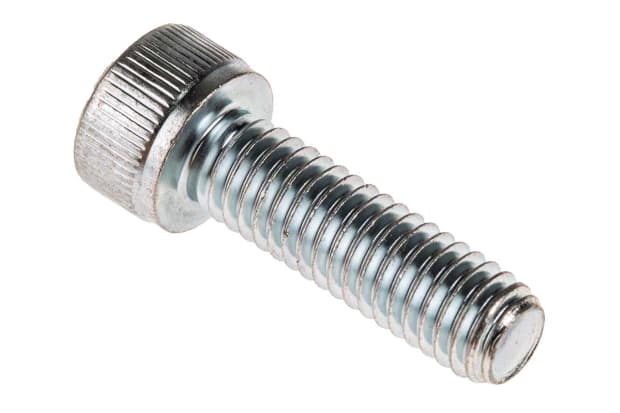
Zinc or Nickel Plated Steel Socket Screws
The primary reason why so many steel socket cap screw sets are available with zinc or nickel plating options is for the superior corrosion (rust) resistance this simple manufacturing process can offer screws of all types.
Combined zinc-nickel plating is generally considered to be a tougher coating (up to twice the hardness) when compared to standard zinc plating, and it can also deliver up to four times the corrosion resistance of other metallic coating processes. However, it is typically more expensive, and may not be considered a cost-effective option in many applications where standard galvanised steel socket screws would suffice.
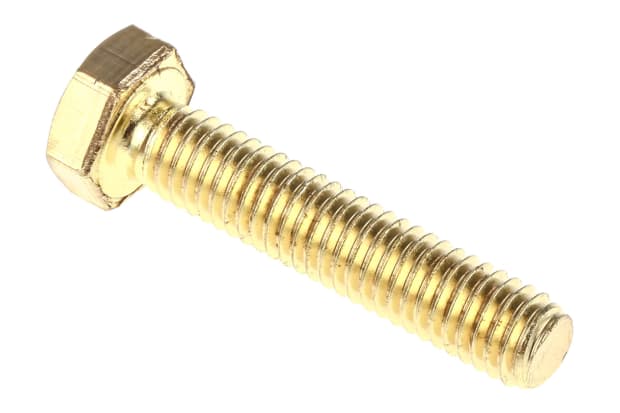
Brass Socket Screws
Brass socket cap screws might often be preferred for their aesthetic value, but as an alloy of copper and zinc, brass or brass-tipped socket screws may offer further advantages in certain situations. Brass is stronger than copper alone, although it will still be considerably less rigid than most varieties of steel or stainless steel socket screws.
However, it's also worth noting that brass plating will be less resistant to corrosion than solid brass socket screws. If the product will be used in an exposed location or outdoor application, solid brass socket screws are the preferable option.
Types of Socket Screws
As well as different materials, socket screws are also available in different types:
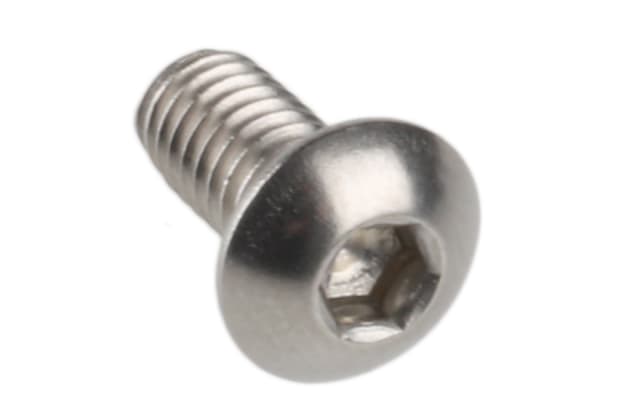
Button Head Socket Screws
Button head socket cap screws are also known as round head or dome head socket screws. They are manufactured with a smooth, slightly rounded dome at the head, which tends to be somewhat larger and more bulbous than standard cap screw varieties.
Often, this means that a button head socket screw can accommodate a larger gauge of hex key or driver, and thus can be affixed with more torque to achieve greater clamping forces. However, smaller sized hex socket button screws should be fastened with less torque.Button socket screws can also be supplied with tamper-proof drives.
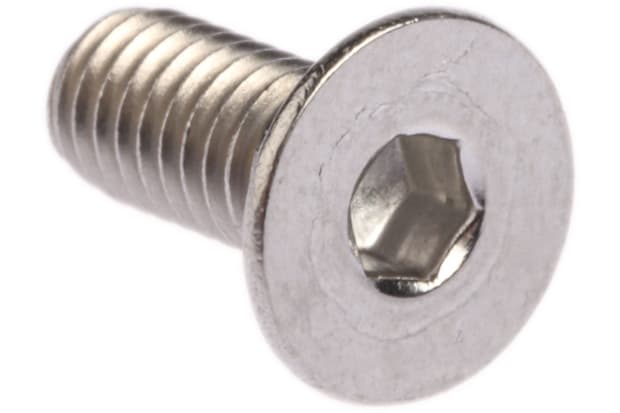
Countersunk Socket Screws
Hex socket countersunk screws, also known as flat or flat head socket screws, are used in applications where it is vital that the installed screw sits flush with or just below the surface of the workpiece.
Countersunk socket screws feature a sloping shoulder design - usually at a standard angle of around 82 degrees - that allows the screw to bed down into the surface via a pre-drilled countersunk hole. Again, they are available in numerous lengths and widths and are widely available under both imperial and metric socket screw sizing charts.
Popular Brands
Yahata Neji
With a range of different sizes and finishes available, browse Yahata Neji socket screws and discover the ideal product for your needs.
All Socket Screws
Choose top-quality products from a range of leading brands and shop online for socket screws today with RS.
